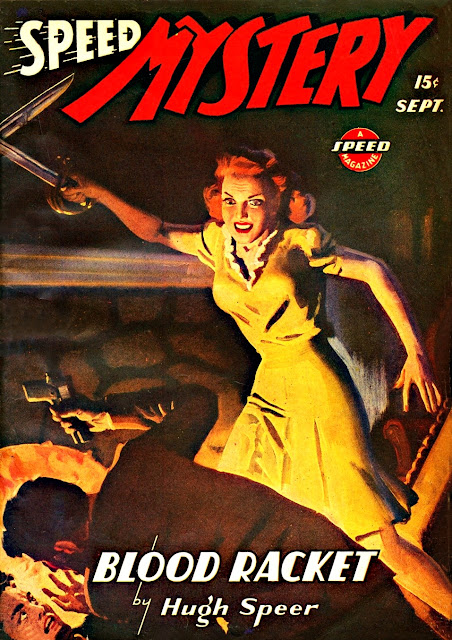Monday, May 31, 2021
Sunday, May 30, 2021
Saturday, May 29, 2021
Friday, May 28, 2021
HE'S BACK: The Second Coming of Elmo by Cecil Jensen (and Frank Young)
Have you read the first collection of ELMO strips? If not, it’s high time you did. For the reasons why, I refer you to my review of that title, posted HERE.
The ELMO strip, which began in various newspapers in 1948, morphed into Elmo and Debbie and turned into Little Debbie in April 1949. Elmo himself, the original star of the strip, disappeared without a trace, while Debbie journeyed on without him for the next twelve years.
As we learned in the first volume, Elmo is a super-nice guy and a perpetual optimist, always thinking the best of other people. Trouble is, his IQ falls somewhere south of that of Li’l Abner. If there was a dumber character in the history of comics, I’ve yet to meet him.
Without Elmo’s consistently oddball presence, the Little Debbie strip was unpredictable. Often, editor Frank Young tells us, it was a quite unremarkable example of daily gags. But writer/artist Cecil Jensen’s sense of humor was too quirky to be thoroughly restrained. On many occasions over that twelve-year stretch, Jensen’s deadpan dark humor would burst to the surface, taking readers to unexpected places.
This new collection is divided into five parts. First, we get a comprehensive and entertaining Introduction by Frank Young, who rescued and cultivated and restored these strips from fading newspaper files. He also adds further commentary throughout the book, and just reading it makes you feel smarter.
Then comes the main event: The 13-month run from August 1960 until the strip’s demise in September 1961, in which Little Debbie jumps the rails to explore new (and old) territory, taking flights of fancy never before seen in the funny papers.
The final 13 months featured other surprises as well, which you’ll want to discover for yourself. As Frank Young points out, Cecil Jensen left no record of thought process or motivation regarding Elmo’s disappearance, or return, or, indeed, any of the changes or surprises to be found in the strip. All we have is the strip itself, and we (with Frank as our tour guide) can only speculate on what was going through Jensen’s fertile mind.
Prior to the publication of these Elmo volumes, Jensen was remembered mainly for his editorial cartoons in the Chicago Daily News. Those cartoons began in 1928 and continued until 1976. Several of his best are included in this book, and the final section features a series of more than thirty featuring the wartime adventures of an opinionated observer called Col. McCosmic.
In all, is a rich and varied collection of off-the-wall wit and humor, often straying well into the Dark Side. It’s an important commentary on the history of comic strips between 1949 and 1961. If you’re more than a little bit crazy (like me), you’ll love it.



















































